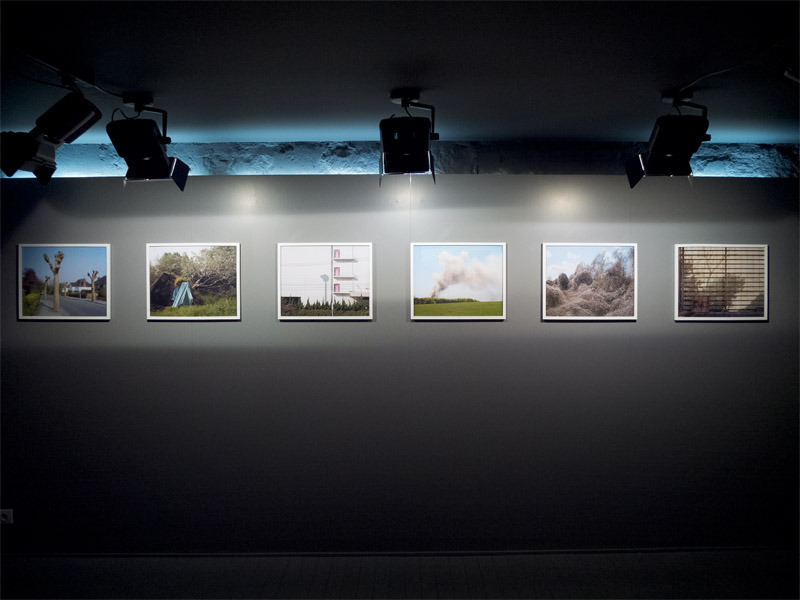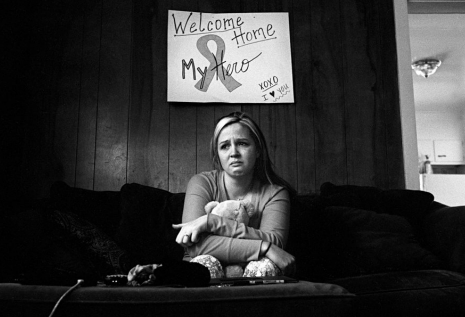 |
| View out of one of the gallery windows onto Bute Street |
Now that I am settled in after our recent move to Wales I've been taking some time to explore Cardiff and the photo galleries there. One of my favourite galleries is the Third Floor Gallery located on Bute Street. I intend to visit this gallery often and, whilst it may be too far for you to visit, I hope that you can learn about the photographers exhibiting there through this blog.
The Third Floor Gallery is actually located over two floors with the recently opened lower floor cunningly named the Second Floor Gallery. It was set up by photographers Joni Karanka, Maceij Dakowicz, and Bartosz Nowicki. It runs only through the generosity of donations and it's staff are all volunteers. The main exhibitions run for about six weeks on the third floor and older ones are 'demoted' to the second floor to extend their exhibition time by a further six weeks. Entry is free but donations and sponsorship are always welcome.
Hin Chau
The main exhibition during this visit was by the photographer Hin Chau. The inspiration for his work was a chance encounter in a rubbish strewn field:“Several years ago, I found myself standing before a field littered with a kaleidoscopic multitude of plastic bags. A middle-aged couple was passing by; 'Isn't this absolutely ghastly?' they announced with considerable consternation. I paused before making a remark that surprised both them and myself: it was one of the most wonderful things I'd seen in a while.” - Hin Chua
This led to his series After the Fall. The images in this series were taken at the edge of developed areas and attempt to show where the grey area between urban and rural/industrial lies. Rather than just wandering around his locations Chau uses satellite imagery to scout a potential location before making a trip to the area. Creating the series has proved a great excuse to travel and so far Chau has visited fifteen countries and hundreds of towns and cities.
For me this series blurred the lines between artistic and documentary photography. The abstract nature of many of the images in the series was appealing when seen as a collection but I only actually liked about six of the images. The images were displayed in smaller sets of photographs, as can be seen below, and I liked the way that lines and curves ran through each of the sets. In each of the sets there always seemed to be an image that just didn't quite fit and I wonder if this was a deliberate artistic tool used to jar the viewer's eye?
I thought that the print quality of the images and the 'pinned to the wall' method of display distracted from the exhibition, but again this may have been the photographer's requested layout/method. Chau has also exhibited in Paris and the display method was different there, much darker and closer to the feel of the imagery as can be seen below:

Due to space constraints only a small portion of the series has been put on display so I would encourage you to explore Chau's work in more depth by looking at his website.
Winter in America: Justin Maxon and Erin Trieb
 |
| No expense spared! |
Having finished looking at the main exhibition I moved down to the 2nd Floor Gallery to check out the work by Justin Maxon and Erin Trieb. These photographers had their work displayed together in an exhibition called Winter in America.
‘Save your souls, it’s winter in America’ cried Gil Scott Heron in 1974, against a backdrop of economic decline, social fragmentation, racial tension and a lingering war in Vietnam.
Fast forward to contemporary America where the economy is struggling, racism blights many communities and the war in Afghanistan adds a daily toll of misery. ...This is the harsh backdrop to the work of Justin Maxon and Erin Trieb, 2010 and 2011 winners of the prestigious FotoVisura grant.
Justin Maxon
Maxon's images in this exhibition were taken from his series When the Spirit Moves. Maxon chose to investigate life in Chester, Pennsylvania and area where violence is commonplace (there are over 300 unsolved murders since the 1990's) and inhabitants have to endure poverty and unemployment.
Many of the images in this series have been created by using multiple exposures in the camera - a successful attempt by Maxon to show the layers of complexity to the poor social situation of his subjects. The images work much better when seen in the gallery rather than the crude recreations displayed in this blog.

Each of the images is accompanied by a short piece of descriptive text that helps to explain what the viewer is seeing - this is particularly useful in the case of the multiple exposures where it is not always clear what has been captured. Even in the single exposure shots the text adds depth and understanding. In the image below, for example, we learn that the subject was shot in the neck in 2008 whilst driving away from a party. The bullet was meant for his friend. As a result of his injuries he was left paralysed. Maxon has captured him sitting and waiting, with an electric toothbrush in his mouth, for his carer to return to finish brushing his teeth.

The high contrast, grainy, black and white images reminded me of a series taken by the street photographer Boogie working in New York. Both are visions of a darker side to society that is often overlooked by the mainstream. I would like to think that showing this underbelly will bring aid and assistance to communities portrayed but I doubt that anything ever gets done, or can be done in the short term, to help.

More of Maxon's work can be found on his website.
Erin Trieb
The second half of the Winter in America exhibition was by Erin Trieb. Where Maxon chose to follow a community to create his images of a broken America, Trieb focused on one individual, 22 year old soldier Adam Ramsey. Ramsey served in Afghanistan and was diagnosed with Post Traumatic Stress Disorder on his return from duty. The images were originally taken as part of Trieb's The War at Home series which document Ramsey's battle with depression and subsequent rehabilitation.This was my favourite part of the exhibition. Classical documentary photography at its best. Trieb had previously worked with veterans and this gave her a stronger insight into the suffering of troops after the fighting had stopped.
As with the Maxon's images texts had been provided to explain each of the images. This really added to the story and the difficulties that Ramsey, and many veterans like him, suffer. The exhibition was quite emotional and I thought that the images and text worked well together to create a strong narrative. I can't believe that this series hasn't been published as a book (and if I'm wrong please tell me where I can get hold of a copy!).


Trieb talks about her work, then part of a charity project called The Homecoming Project to the DARTS Society HERE.
Summary
I had a great time at the Third Floor Gallery and it was well worth the trip. I can't say I was taken with all of Chau's images, but there were one or two that I would like to own prints of. The Maxon and Trieb works were powerful and emotive. I hadn't heard of either photographer before my visit and so I'm glad that I have now discovered their work, Trieb's in particular. The Winter in America exhibition is due to end very soon (it has already been extended twice) so if you can you should hurry on down and see it.




No comments:
Post a Comment